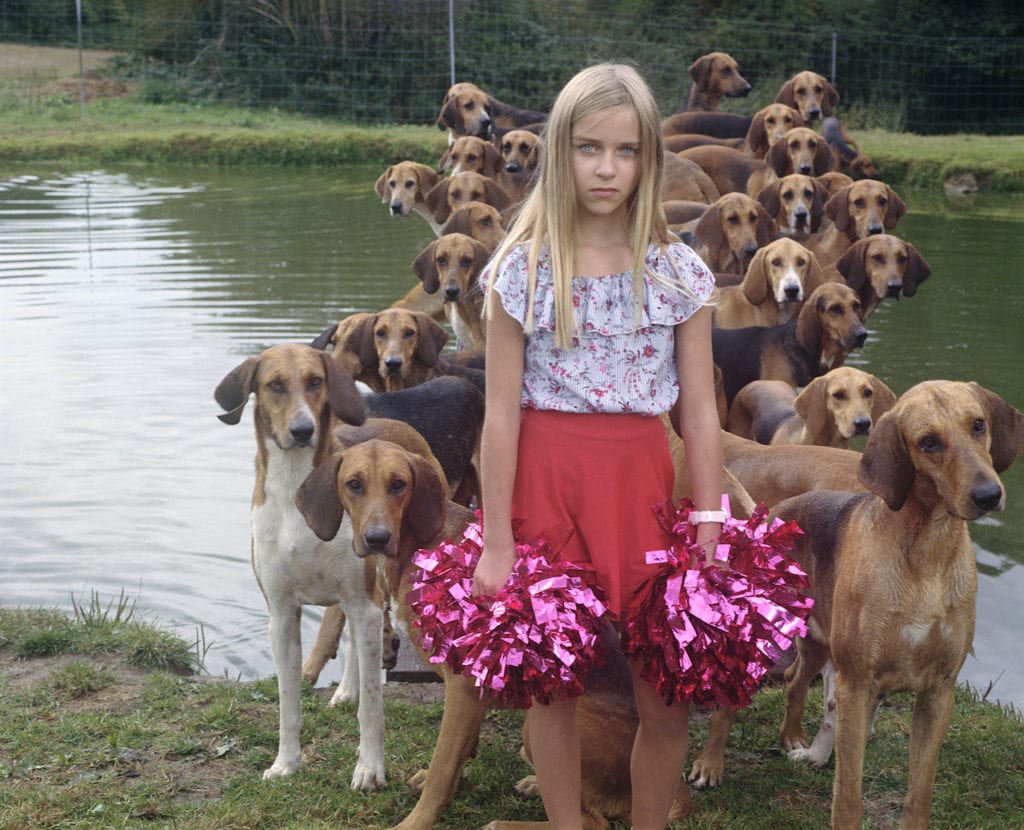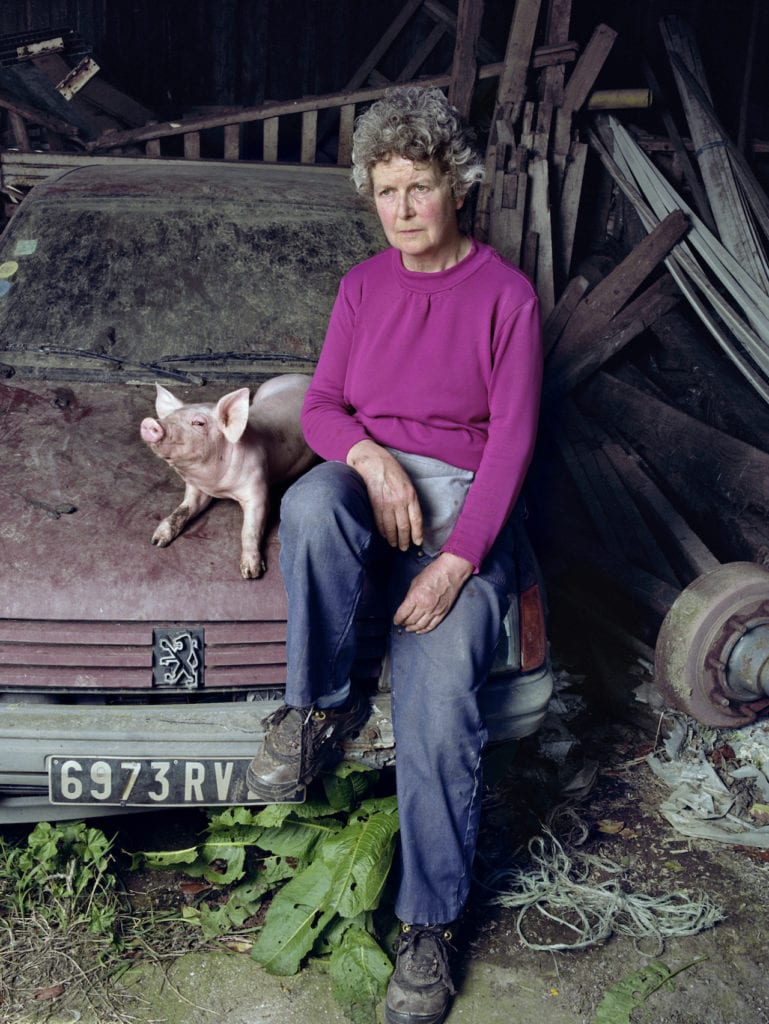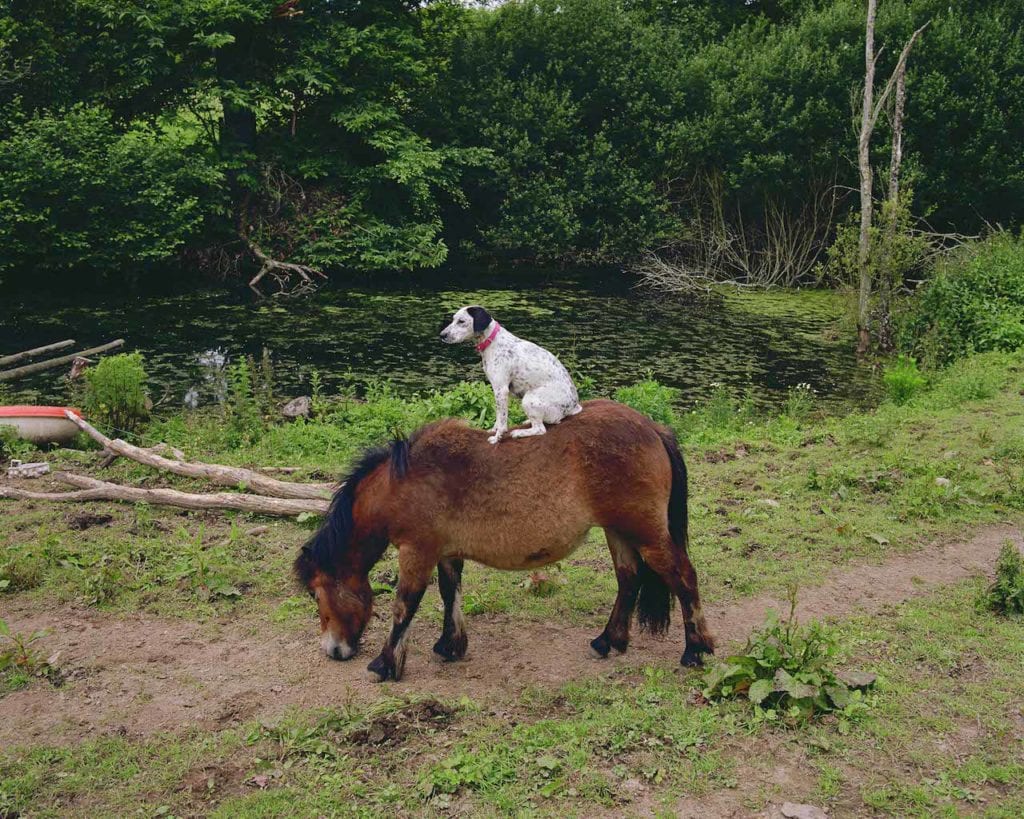On 23 June 2016, the UK voted to leave the European Union, plunging the country into over three years of ‘Brexit’ negotiations and ongoing political and social unrest. On that day, Mark Neville was at the opening of a group exhibition with Tom Wood and Chris Killip at the Centre d’Art GwinZegal in Guingamp, a small town in Brittany, France. As the only photographer present at the show, which was, rather appropriately, titled British Subject, Neville was required to deliver a speech. Standing up in front of the Breton audience, the first thing he said was, “I am ashamed”.
Being in Guingamp on Brexit day prompted the photographer to start thinking about the parallels between this region of France and the UK. During the Anglo-Saxon invasion of Britain, between 400 and 600 AD, many Celtic Britons sought refuge in northwestern France. Back then, the region was known by its Roman name, Armorica, but the strong Celtic settlement gave it a new regional title, Brittany. Today, the Breton language, one of six Celtic languages also comprising Welsh, Cornish, and Irish, is still commonly spoken.
Along with these historical links, Neville saw parallels between both country’s political climates — the Brexit vote occurred around the same time that Marine Le Pen, president of the right-wing National Rally, was launching her campaign for the French presidential elections. But, more importantly, the photographer was attracted to the importance of identity for the people of Brittany, which he felt was manifested through their search for and preservation of community, which centred around agriculture.
“It was a mirroring British identity in a strange way,” says Neville. “It is a small regional area, but it’s got this huge sense of identity.” With support from the Centre d’Art GwinZegal, Neville spent three years travelling back and forth between Guingamp and London, photographing the town’s rich agricultural community, and its famous football club and baton twirling teams, who have won national and international awards. Neville also approached individuals, along with groups of friends and families, documenting them in everyday scenes that possess a theatrical element – something for which his photography has become known.
“There is a real sense in which agriculture, and even more than that people’s relationships to animals, is absolutely fundamental to how they live,” says Neville. “It was wonderful for me to see this, all these relationships going on between people and animals.” Among the stories he encountered was a man who bred and owned dozens of hunting dogs, just because he loved the breed, and a woman who quit her job at the abattoir to transform her home into a sanctuary for disabled animals. “It’s full, like a Noah’s Ark for all these animals, like blind horses and injured guinea pigs, coexisting,” says Neville, “it’s her way, I guess, of re-addressing the balance of all those years she spent in the slaughterhouse”.
In 2019, these images were published in Parade, a photobook that is now nominated for the prestigious Deutsche Börse Photography Foundation Prize, and exhibited at The Photographers’ Gallery in London alongside fellow nominees Clare Strand, Anton Kusters and Mohamed Bourouissa.

Sitting in his lofty home-studio in Old Street, London, we are surrounded by stacks of books and bundles of prints from various long-term projects. Whether it be about mental health, toxic waste, or wealth inequality, Neville is known for creatingsocially engaged photobooks that are distributed to a specific audience with the intention of giving back to his subjects and their communities. Deeds Not Words (2010-2012), for example, chronicled the town of Corby, Northamptonshire, where the infamous Corby toxic waste case of 1998 took place. The book was never released commercially — instead, it was distributed to local authorities and global environmental organisations to raise awareness of issues around land reclamation and the handling of hazardous waste. More recently, Childsplay (2016) was sent to 433 local councils and key policy makers in the UK, to advocate for the importance of public play spaces in children’s development.
One of Neville’s most celebrated projects, and his most personally rewarding, was Battle Against Stigma (2015-2018), a photobook that recounts his own experience of PTSD following a three-month commission in Helmand, Afghanistan, in 2010. “It still makes me cry when I talk about it,” says Neville, “I came back, as anyone would, traumatised”. The book was not commercially distributed. Instead it was sent out to prisons, and homelessness and mental health charities with the hope that it would reach soldiers who had “fallen through the cracks”, asking them to reach out for help and share their own experiences. Neville’s personal account was also published in the Independent, which led to a flood of responses from people who were, or knew someone who was, suffering from adjustment disorder. These accounts were published in a second volume of Battle Against Stigma, and displayed alongside his photographs from Afghanistan in a touring exhibition.
“This idea that somehow you can have a seamless transition from being in a war zone to walking down Old Street — not possible,” says Neville. “You can put a cat in a field and let bombs off around it all day, the cat might survive, but it won’t be the same animal anymore, it will be changed for life.”

The social intentions that precede Neville’s photography form an important part of his practice. “I really have to feel like I’m somehow breaking new ground,” he says, “and that is what has been the real joy for me over the past 20 years — this feeling that I’m ploughing a field that nobody else is.” However, for the first time in 20 years of producing documentary projects, “[Parade] was the very first time that I began a project blind,” says Neville. “I didn’t have an intention from the beginning, but I did find it in the process.”
The theme that Neville discovered running through his images was the search for an Ecotopia, a term coined by Ernest Callenbach in his 1975 utopian novel of the same name, and the community, which developed around that. “I felt an affinity to Callenbach’s ideas when I was making the project, and I thought that this search for an Ecotopia was going on almost subconsciously in Brittany,” says Neville, describing the unique relationships that he found between the people, their land, and its animals.
However, Neville was also driven by a desire to shed light on the difficulties faced by the community. Farming forms a central part of Brittany’s regional identity, a place where pigs outnumber humans two to one. However, due to globalisation and urban development, among other factors including climate change, international demand, the industrialisation of farming systems, farmers are under a huge amount of pressure, not just in Brittany but worldwide. According to the UN, of the 570 million farms in the world, more than 90 per cent are run by an individual or a family, who produce about 80 per cent of the world’s food. As land prices rise, and access to it becomes more difficult, small farmers are under increasing economic pressure and stress; in the UK, more than one farmer a week dies by suicide.
Following his Deutsche Börse nomination, Neville decided to publish a follow-on book, Parade (texts), which comprises interviews with some of the farmers he met in Brittany. The book also includes a call to action from farming charities and organisations, addressing an issue that almost every farmer in Brittany has struggled with: Access to land. “Conditions for farmers are grim, and that’s partly because of government regulations,” says Neville, who writes in the introduction: “Too little is known or discussed about this, and the aim of Parade (texts) is to give urgently needed support to those independent farmers who are trying to safeguard and develop what they do.” Along with the photobook, Parade (texts) will be distributed to key policy makers, attempting to instigate change and alleviate a struggle that is experienced by farmers all over Europe and beyond.

Neville sees himself an activist, “but having said that, at the end of the day, I still consider myself an artist,” he says. The photographer studied Fine Art at the University of Reading before completing an MA in conceptual art at Goldsmiths, University of London. Still, his artistic references, which includes Hans Haacke, who explores institutional critique in the museum system, as well as artists such as Martha Rosler and Robert Heinecken, are very much socially engaged. “I’ve never been able to make pictures and just see them in a newspaper, or on a gallery wall,” says Neville. “I’ve always felt that because photography deals with reality, I’ve got an ethical responsibility to try and change the world“.
Last month, Neville was photographing on the frontline in Ukraine, and this week he will be travelling to Chernobyl for The New York Times. His upcoming book with Steidl, Ukraine — Stop Tanks with Books, comprises five years worth of work made in Ukraine, with subjects ranging from holidaymakers, churchgoers and nightclubbers, to some of the two million people who have been displaced by the war in Eastern Ukraine. Compiled with research relating to the war, two million free copies of the book will be distributed to policy makers, members of parliament in both Ukraine and Russia, and the international media. “The idea is that if you’re a recipient of this book, you’re in a position to help change this situation.”
After documenting and experiencing the effects of so many structural injustices within society, one does wonder whether Neville feels disillusioned by our world. “Yes of course,” he responds, and then after a slight pause, “but it’s good to be awake, isn’t it?” Does he think his projects actually change anything? “I’m not sure. But I do know that I have a responsibility, or the work has a responsibility to try, at least. Because if it doesn’t, then we’re all going to hell in a hand-basket.”
Parade by Mark Neville will be exhibited as part of the Deutsche Börse Photography Foundation Prize 2020 exhibition at The Photographers’ Gallery, London, until 07 June 2020.
—
